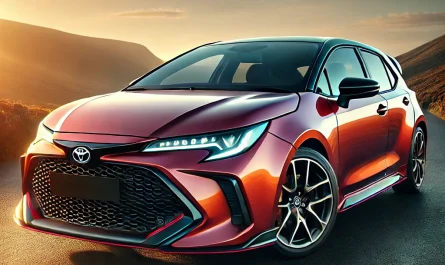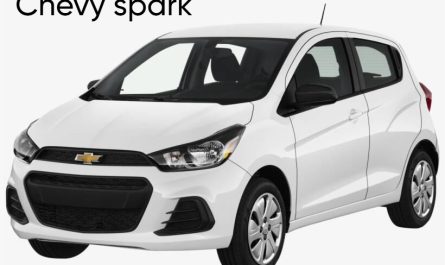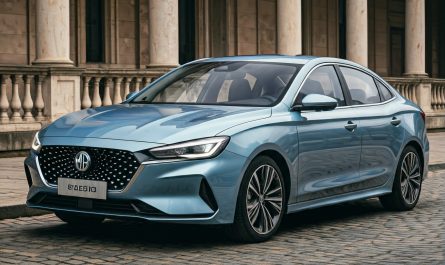The evolution of the automobile has witnessed numerous advancements in technology, and one of the most significant developments in the automotive world over the last few decades has been the shift toward Continuously Variable Transmissions (CVTs). CVTs have been praised for their smoothness and fuel efficiency, particularly in smaller cars and city-focused vehicles. However, many drivers, especially those behind the wheel of an SUV, prefer traditional automatic transmissions due to performance, driving experience, and reliability concerns.

While CVTs are a fantastic choice for some, they aren’t ideal for everyone. In particular, those who need their SUVs for towing, off-roading, or who simply value a more engaging driving experience may not be fans of CVTs. The good news is that many automakers still offer SUVs equipped with traditional automatic gearboxes, dual-clutch systems, or even manual transmissions, providing drivers with more options.
In this article, we’ll explore some of the best SUVs on the market that don’t feature a CVT, offering you alternatives that emphasize performance, reliability, and driving pleasure.
Understanding CVT Transmissions: Pros and Cons
To better understand why some drivers prefer to avoid CVTs, it’s important to first break down what makes them different. A Continuously Variable Transmission (CVT) operates by using a belt and pulley system to continuously adjust the gear ratio, offering a seamless driving experience. There’s no shifting between gears as you’d expect in a traditional automatic transmission. This can translate into better fuel economy, especially at lower speeds.
Pros of CVTs:
- Fuel Efficiency: CVTs are designed to keep the engine in its most efficient RPM range, which helps improve fuel economy, especially in city driving conditions.
- Smooth Acceleration: The absence of gear shifting means that acceleration is smooth, without the jolts or hesitations that can sometimes occur with automatic transmissions.
- Reduced Mechanical Wear: With fewer moving parts compared to traditional automatics, CVTs tend to experience less wear and tear under normal driving conditions.
Cons of CVTs:
- Lack of Driving Engagement: Many drivers complain that CVTs feel disconnected from the driving experience, especially during hard acceleration, where the “rubber-band” effect can be noticeable.
- Towing Limitations: CVTs generally don’t handle the high torque loads needed for towing heavy trailers or carrying substantial cargo as well as traditional automatics.
- Reliability Concerns: Though improvements have been made, CVTs still don’t have the long-term reliability track record of traditional automatic transmissions.
- Driving Control: Some drivers prefer the ability to control gear changes themselves, which is impossible with a CVT. This is especially true for those who enjoy spirited driving or off-roading.
With these pros and cons in mind, it becomes clear why some SUV buyers would rather opt for vehicles that use traditional automatic transmissions.
Why Choose an SUV Without a CVT Transmission?
For those looking for an alternative to CVTs, the question arises: why not just choose a traditional automatic transmission or manual gearbox? The main reasons people avoid CVTs in SUVs typically include the following:
- Better Performance: Traditional automatic transmissions, particularly those with more gears (6, 8, or even 10-speed), offer faster acceleration, better power delivery, and a more dynamic driving experience.
- Towing and Hauling: Many SUVs are designed for towing heavy loads, which requires more robust transmissions. Traditional automatics typically handle the stresses of towing much better than CVTs.
- Off-Roading and Rugged Driving: SUVs like the Jeep Wrangler or Toyota 4Runner are designed to take on challenging terrains, and for this, they rely on transmissions that provide more control and predictability.
- Longevity and Reliability: Traditional automatics, especially the older 6-speed and 8-speed systems, have a long track record of durability and are generally seen as more reliable in the long run.
In addition to these, many drivers simply prefer the driving feel of an automatic transmission over the sometimes odd sensations associated with a CVT.
Best SUVs Without CVT Transmission
Let’s explore some of the best SUVs currently available on the market that offer a traditional automatic or manual transmission, focusing on performance, comfort, and reliability. These vehicles represent the ideal alternatives for drivers looking to skip the CVT experience.
1. Jeep Grand Cherokee
The Jeep Grand Cherokee is a versatile, luxurious, and powerful SUV that has earned a reputation for off-road prowess. The latest Grand Cherokee comes with a robust 8-speed automatic transmission that offers quick shifts and efficient power delivery. Whether you’re navigating rocky paths or cruising on highways, the 8-speed automatic system ensures a responsive driving experience.

Engine options for the Grand Cherokee range from a 3.6-liter V6 to a powerful 5.7-liter V8, with the 8-speed automatic transmission helping to maximize the performance of these engines. Jeep’s sophisticated 4×4 systems also come with different configurations, allowing for an adaptable driving experience in a variety of terrains.
Whether you’re towing, off-roading, or simply commuting, the Grand Cherokee provides a seamless transition between city and rugged environments without the compromise of a CVT.
2. Toyota 4Runner
The Toyota 4Runner is an iconic SUV with off-road credentials that date back to its debut in the 1980s. It’s an SUV that thrives on durability and capability, and it doesn’t compromise on performance with a CVT. Instead, it’s equipped with a traditional 5-speed automatic transmission, which is paired with a 4.0-liter V6 engine. The 5-speed automatic gives the 4Runner a more direct and engaging feel, particularly when navigating challenging landscapes.

The 4Runner has a body-on-frame design, which is a strong point for off-roading enthusiasts. Whether you’re driving on a rough trail or navigating city streets, the 5-speed automatic transmission in the 4Runner is reliable, easy to use, and free of the “rubber-band” sensation that some CVT-equipped vehicles may experience.
3. Ford Bronco
The new Ford Bronco is a rugged off-road SUV that stands out with its available 7-speed manual transmission. For those who seek an even more engaging experience, Ford offers a 10-speed automatic transmission, which provides quick and smooth gear shifts without the stuttering feeling found in CVT-equipped competitors. This transmission setup gives the Bronco the performance needed to tackle trails and rough roads with confidence.

Beyond its transmission options, the Bronco also comes with an array of off-road technology, including locking differentials, trail assist, and advanced suspension systems that make it one of the best choices for off-road enthusiasts looking for more than just a smooth ride.
4. Chevrolet Tahoe
The Chevrolet Tahoe is a full-size SUV that combines powerful performance with modern comfort. Equipped with either a 5.3-liter or 6.2-liter V8 engine, the Tahoe uses a 10-speed automatic transmission to deliver smooth and responsive power, whether you’re towing heavy loads or driving across long distances. This powerful transmission allows the Tahoe to handle both heavy towing and city driving with ease, making it one of the top full-size SUVs for families and those needing an SUV that can handle anything.

With a towing capacity that can exceed 8,000 pounds, the Tahoe is more than capable of hauling large trailers, boats, or RVs, and its 10-speed automatic ensures that you can manage these heavy loads without compromising on the driving experience.
5. Honda Pilot
The Honda Pilot is a three-row SUV that balances performance with family-friendly features. The 9-speed automatic transmission, which comes standard in the Pilot, provides a responsive and smooth driving experience. The Pilot’s 3.5-liter V6 engine makes it a solid choice for families who need extra space but don’t want to sacrifice performance.

In addition to its solid powertrain, the Pilot comes with all-wheel drive options, making it capable enough for moderate off-roading, while the 9-speed automatic transmission keeps things smooth during daily commutes.
6. Nissan Pathfinder
The Nissan Pathfinder has seen significant updates in recent years, including the replacement of its former CVT with a traditional 9-speed automatic transmission. This update has been well-received, as it delivers a much more predictable driving experience, especially when towing or navigating tricky road conditions.

The 3.5-liter V6 engine paired with the 9-speed automatic provides ample power for the Pathfinder to handle everything from family road trips to hauling cargo, while also improving fuel efficiency compared to older versions of the Pathfinder that used CVTs.
Frequently Asked Questions (FAQs) About SUVs Without CVTs
1. Why are most SUVs using CVTs nowadays?
CVTs offer improved fuel efficiency and smoother driving experiences, particularly for vehicles that are primarily used for city driving. They also reduce the number of moving parts in the drivetrain, which can make them more cost-effective to produce.
2. Can CVTs handle towing?
While CVTs are typically fine for light towing, they often struggle with the high torque required for heavy towing. Traditional automatics tend to perform better under these conditions, which is why many towing-oriented SUVs continue to use conventional gearboxes.
3. Are CVTs less reliable than traditional automatics?
In general, traditional automatics have a longer track record of reliability compared to CVTs. While modern CVTs are more robust than older models, some consumers still have concerns about their long-term durability, particularly in high-stress conditions.
4. What are the best alternatives to a CVT for off-roading?
For off-roading, vehicles like the Jeep Grand Cherokee, Toyota 4Runner, and Ford Bronco offer traditional automatic transmissions that deliver the control and reliability needed to navigate difficult terrain. These vehicles also offer features such as 4WD, low-range gearing, and off-road driving modes to enhance performance in tough conditions.
5. Do SUVs without CVTs offer better fuel efficiency?
Not necessarily. While CVTs tend to offer superior fuel efficiency in city driving, many traditional automatics have caught up in terms of efficiency, especially with advancements like 8- or 10-speed gearboxes that help optimize power delivery.
Conclusion
While CVTs have their advantages, especially in terms of fuel efficiency and smoothness, many drivers prefer traditional automatic transmissions for their performance, reliability, and driving engagement. Whether you’re towing, off-roading, or simply looking for a more dynamic driving experience, there are plenty of excellent SUV options without CVTs.
From the off-road-focused Jeep Grand Cherokee and Toyota 4Runner to the family-friendly Honda Pilot and Nissan Pathfinder, these SUVs offer a range of features that cater to drivers who value power, control, and long-term durability. Ultimately, the choice between a CVT and a traditional automatic comes down to personal preference, but for those who seek a more connected and robust driving experience, these non-CVT SUVs are the perfect fit.


